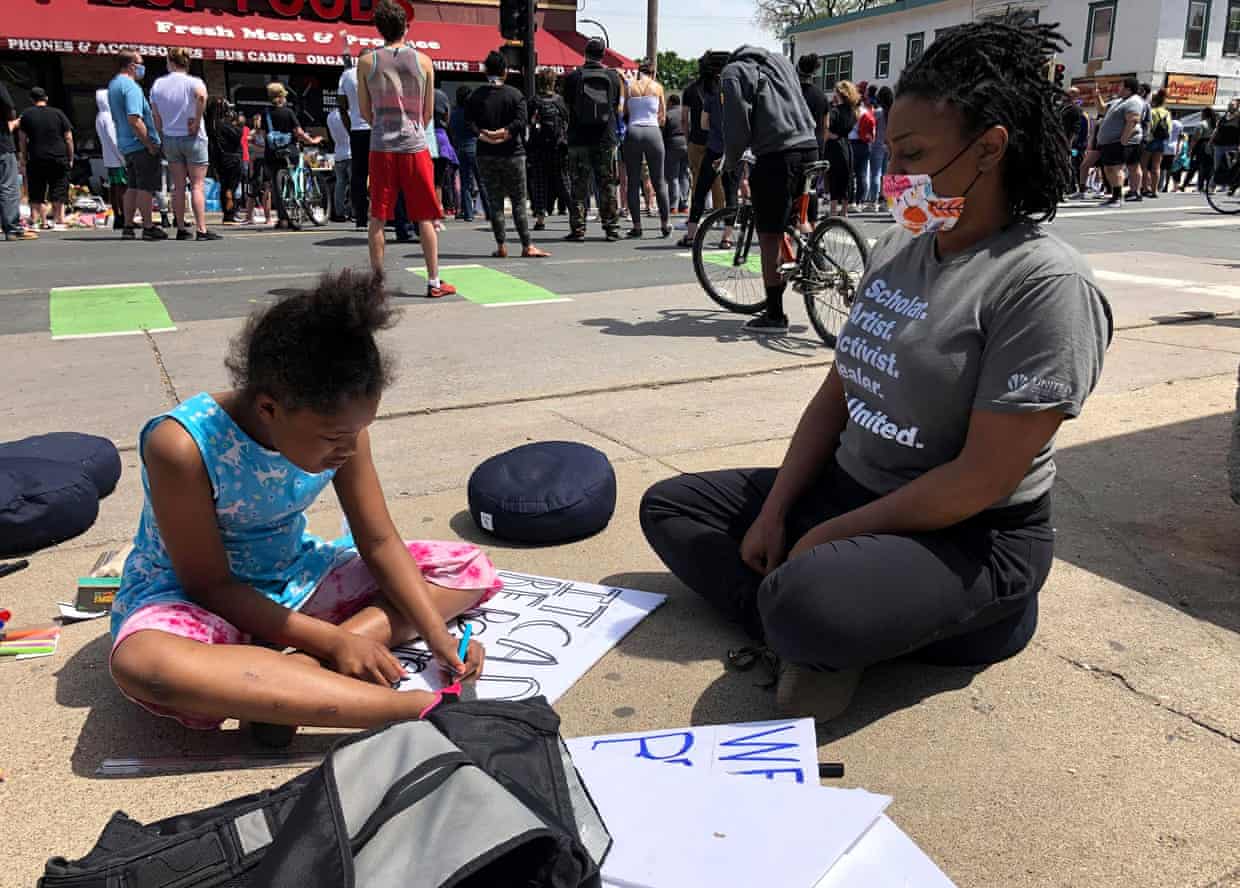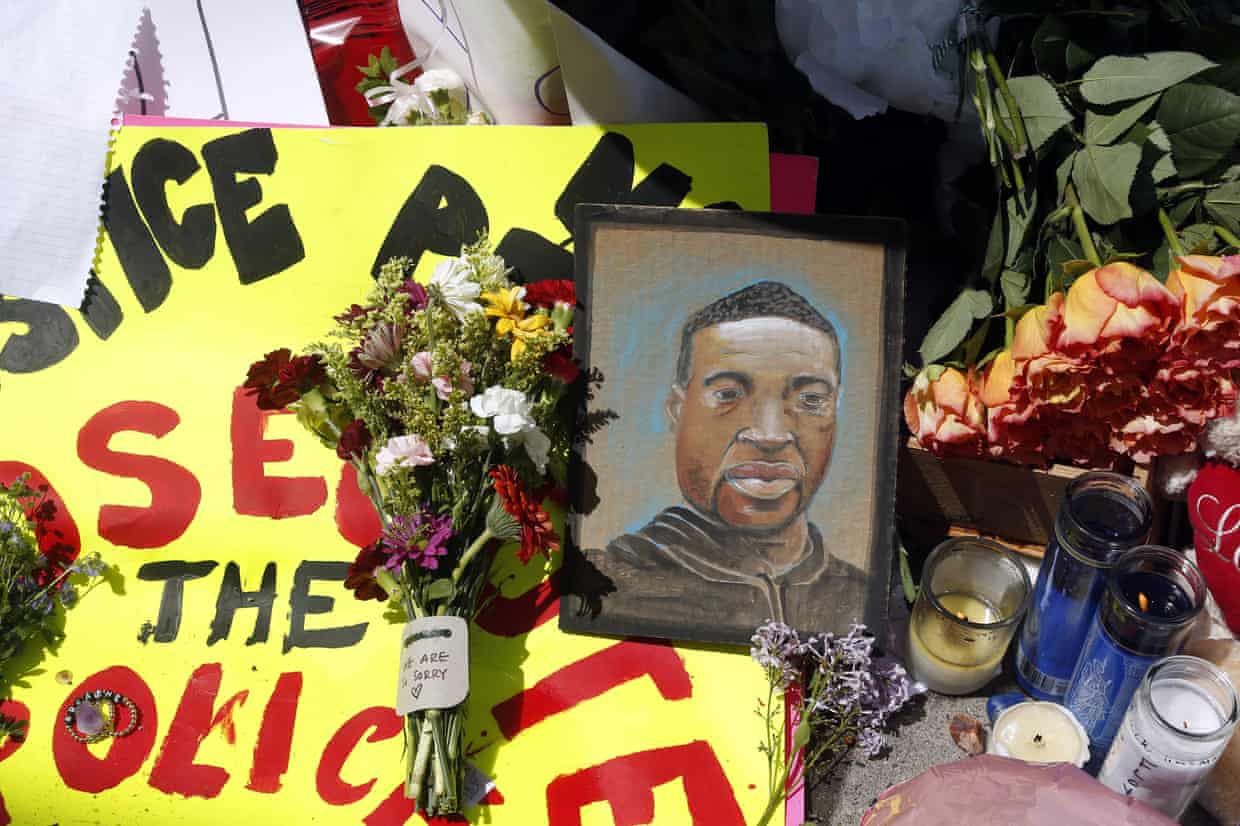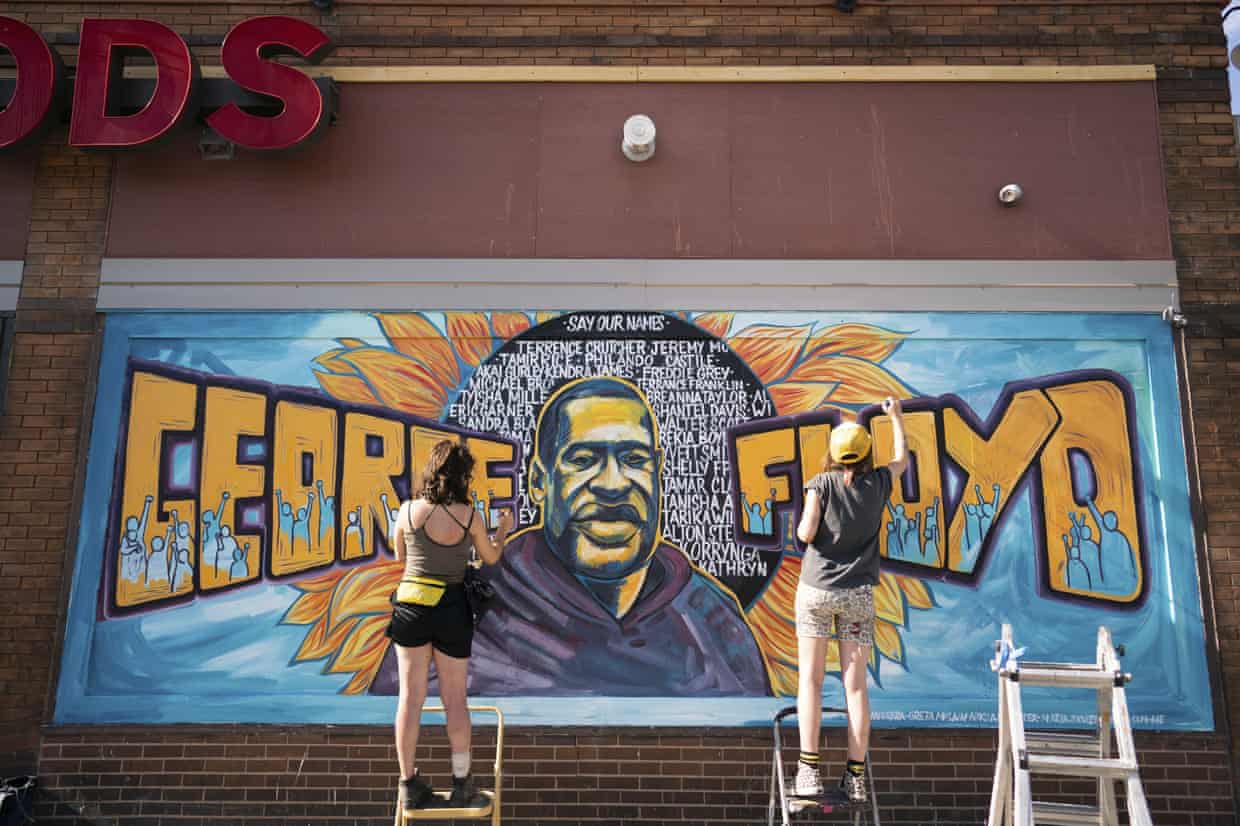
George Floyd
A young girl who watched George Floyd suffocate finds her place in the protest movement
Protesters leave signs and tributes as years of frustration at racial disparities in policing come to the surface
by Jackie RenzettiNine-year-old Judeah Reynolds watched George Floyd suffocate under a Minneapolis police officer’s knee.
Days later, she sat on the sidewalk just yards away from where he drew his final, agonized breaths. With pink, red and blue markers, she quietly colored in the block letters of her placard. It read: “It can be better.”
Diva Reynolds, Judeah’s mother, said she and her family had been visiting Minneapolis from nearby Columbus on Monday. Her daughter had been walking with a relative and came across the violence unfolding outside a grocery store in a southern neighbourhood of the city.
Cellphone video footage of the incident has now been watched by tens of millions of people worldwide, and helped to ignite mass protests in the city and across the US.
“He can’t breathe. That’s wrong,” Judeah had said at the time, according to her mother, her voice joining those of several other witnesses who pleaded with the white police officer as he knelt on Floyd’s neck for almost eight minutes, despite Floyd’s cries that he could not breathe.
“You’ve got 10 people on your side telling you to let off this man’s neck and you didn’t show no mercy,” Reynolds told the Guardian, referring to the officer, who has been identified as Derek Chauvin, a 19-year veteran of the force. “You didn’t show no mercy for life. You didn’t show no mercy as a human being and you damn showed no mercy as a person that worked for the city.”
Reynolds and her daughter were two of about 150 people who gathered on Thursday afternoon to listen to the veteran civil rights activist the Rev Al Sharpton and Gwen Carr, whose son Eric Garner died after he was subjected to a police chokehold in New York City in 2014. Like 46-year-old Floyd, he had also pleaded, “I can’t breathe.”
“The reason you see the anger in Minneapolis is that this is not the first time,” Sharpton said. “I wanted to come and let you know that we are with you until we get justice.”

Jamar Clark was 24 years old when he was shot dead by Minneapolis police in November 2015. Weeks of protests, including an encampment at a Minneapolis police station in freezing temperatures, followed but the officers involved were not charged. Less than a year later, 32-year-old Philando Castile was pulled over and shot dead by a St Anthony police officer, sparking nationwide protests. The officer involved was cleared by a jury in 2017.
In July 2017, a Minneapolis police officer, Mohamed Noor, shot Justine Damond after she called 911 to report a possible sexual assault outside her house. Noor, who is Somali American, was ultimately convicted of third-degree murder and manslaughter and was sentenced to 12.5 years in prison in June 2019. The dynamic of how an officer of color was charged after shooting and killing a white woman – following two incidents where white officers were not charged after killing two black men – drew yet more scrutiny over deep disparities in the criminal justice system.
Chauvin, who pinned Floyd to the ground, and three other officers who stood by, were fired on Tuesday. Though it marked a break from a pattern of lagging responses from the police department, it came after police originally issued a statement saying Floyd had died after a “medical incident”, sparking widespread criticism that it had tried to downplay what had happened until footage went viral.
“People are getting just really tired, really tired and fed up. It’s just constantly been happening,” said Aisha Breland, 40, at the gathering for Floyd. “It could have been my brother. It could have been my son, it could have been anybody.”
A step towards justice for Floyd would be to immediately charge the four officers, Sharpton said. But at a press conference later on Thursday, the Hennepin county attorney Mike Freeman said while the “video is graphic and horrific and terrible”, there is “other evidence that does not support a criminal charge” and he “will not rush” on a decision.
After Sharpton’s remarks, community members – including the Minneapolis city council vice-president, Andrea Jenkins, who represents the area – passed the mic for at least two hours to speak their minds.
Jenkins had earlier urged state and local officials to declare racism a public health emergency.
“To those who say bringing up racism is racist in and of itself, I say to you, if you don’t call cancer what it is, you can never cure that disease,” she said. “And so in an effort to try and cure this disease, I am stating exactly what everyone else has witnessed, and that is racism.”

Sharpton and many of the other speakers at the gathering emphasized the need to focus on tackling systemic racism and how it led to Floyd’s death, rather than on the riots in the city, which have seen a police precinct stormed, multiple buildings set alight and businesses looted, making international headlines.
“Someone said to me, are you going to address the violence?” Sharpton said. “The violence I’m addressing is how a man could hold a man down with a knee on his neck for nine minutes. That’s when the violence started.”
Mark Graves, who has worked with youth in south Minneapolis for 30 years, called for an end to the looting, and for efforts to be refocused on the issues at hand.
“What really worries me is we’re forgetting why we’re here,” said Graves. “The problem is bigger than a riot. The problem is bigger than the one African American male who was murdered. This has been going on and on and on and on and on. The problem is bigger. And part of the problem is, we haven’t we haven’t figured out any answers.”